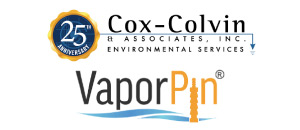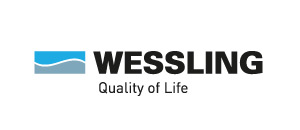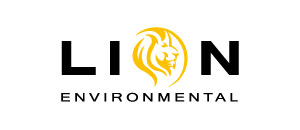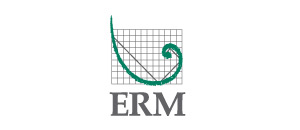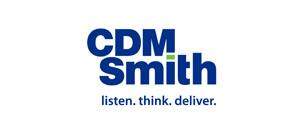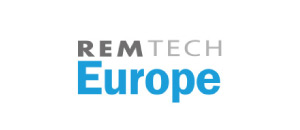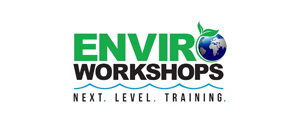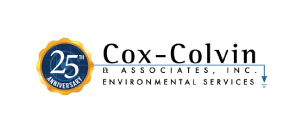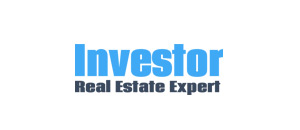Live peacefully in a clean environment
REMEDy is gaining more and more attention. This year's edition of the on-line conference was attended by several hundred people, the public sector and universities were widely represented. This means that in Poland, awareness of the importance of land and groundwater remediation is growing. The administration at all levels is beginning to notice that the quality of the ecosystem will soon clearly translate into the financial aspects of investments in contaminated areas.
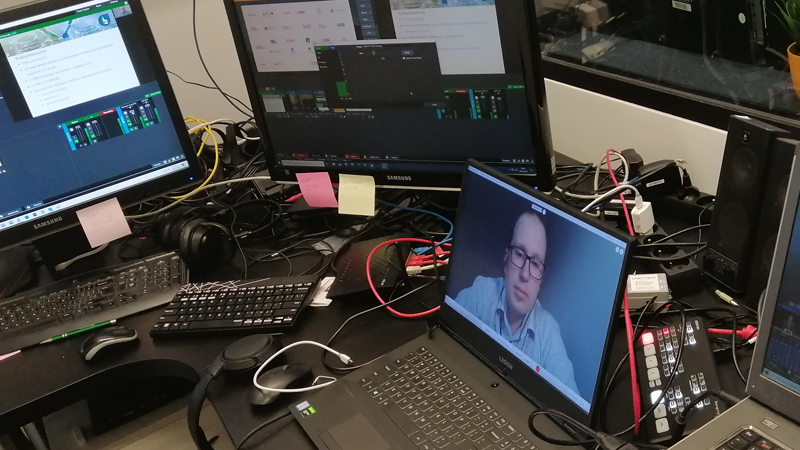
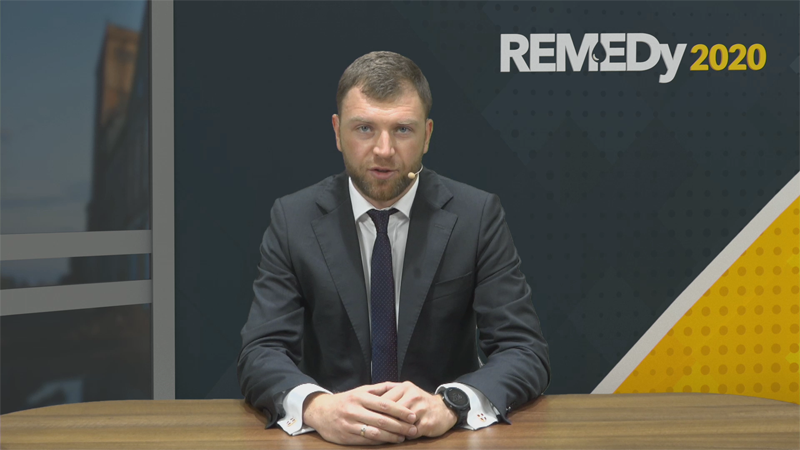

A number of participants REMEDy Summit
2018
2019
2020
The remediation industry in Poland will experience its golden age in a moment. Why? Because from year to year people are becoming more aware that remedial actions are needed in post-industrial polluted areas. Urban centers are expanding, post-industrial areas are becoming potential sites for new locations for housing estates, local governments want to invest in new green public spaces. Today, it is impossible to just build a housing estate in a contaminated area. Not only regulators and regulators are interested in the quality of land, but more and more often citizens. This is the result of continuous education and publicizing the problem of contaminated areas. The REMEDy conference, in addition to exchanging experiences from world experts, also has an educational mission to fulfill. Is this goal being achieved successfully? In this year's edition of the meeting, a large part of the participants were students of environmental protection studies. This means that for future staff responsible for the quality of the environment, REMEDy is a source of knowledge about the risks and methods of counteracting soil and groundwater pollution.


Green Europe
“The world is beginning to see that you cannot act against the environment. Many financial institutions are departing from subsidizing investments that are contrary to the principles of sustainable development, "said Sebastian Stachowski, Managing Director of Lion Environmental, the organizer of REMEDy a, opening this year's conference. To this should be added social expectations and the risk of loss of trust and image by commercial companies. This makes organizations increasingly interested in the environment. The low-carbon economy pursued by the civilized world is also becoming a factor of change. A good example of top-down changes is the new economic development strategy of the European Union known as the European Green Deal. “By 2050, we should become land-use neutral in Europe. I do not know how it will be implemented, but the first step should be remediation and recovery of contaminated sites "- said Marco Falconi, REMEDy 2020 Key Note Speaker. Marco Falconi is an employee of ISPRA in Italy, the equivalent of the Polish General Directorate for Environmental Protection, co-organizes the largest industry conference in Italy REMTECH remediation. He is also the head of the pan-European IMPEL initiative, which brings together all European Union countries (and several others). According to him, the new European policy will have a strong impact on the remediation industry and the dissemination of the problem of contaminated soil and groundwater in Europe. There are estimates of one trillion euros that will be spent on cleaning up pollutants in the next decade. In addition, as the special guest of the conference pointed out, now there is also a "covid" fund, which is to stimulate the economy in 2012-2027, it is another EUR 100 billion, some of which will be used for projects improving the condition of soil and water.
It is worth realizing that remediation is not something incidental, involving several post-industrial lands. The scale of the problem across Europe is huge. Marco Falconi presented a report from 2018 which shows that industrialized countries have a really big problem. The pan-European initiative on the basis of which the report was based was, inter alia, to develop a definition of pollution common to the member states. By achieving consistency in the determination, it was easier to check contaminated locations. In 2018, there were nearly 2.8 million (!) Of them in total. Another 360 thousand. sites needed to be examined due to the suspicion of contamination. 122 thousand places were tested, 148 thousand needed remediation. However, 14,000 of them were carried out. This shows just how acute and in need of global attention the problem is.


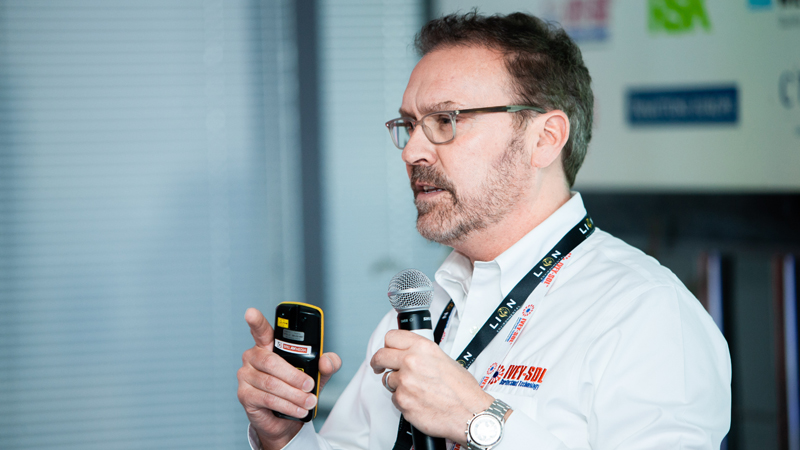
Is Poland arbitrary?
Of course, the problem won't go away in a year or two. However, it is important that measures are taken to protect future generations from the harmful effects of pollution. The remediation is therefore fully justified. However, to be effective, the legislative environment must be friendly. Is it so? It is definitely getting better, although, as the organizers of REMEDa point out, a few important regulatory acts are still missing:
1. Poland lacks binding groundwater quality standards. As a result, investors during remediation, i.e. cleaning of contaminated areas, are not sure whether their remedial actions will be sufficient in the future, when binding standards appear.
2. There are no binding guidelines on the methodologies for carrying out the so-called risk assessment, i.e. assessment of the occurrence of a significant threat to human health or the environment. Such an assessment is always performed prior to remediation in order to check what are the risks of current pollutants for users and the environment. Due to the lack of appropriate guidance, risk assessments may overlook key issues relevant to their results, and authorities may have difficulties in assessing them.
3. The current Ordinance of the Minister of the Environment of September 1, 2016 on the method of assessing the pollution of the earth's surface ambiguously defines the number of required analyzes for water permeability when assessing the quality of the soil and water environment. Some RDOS interpret them in such a way that the testing of all soil samples must take into account the water permeability parameter, which is not often justified, but significantly increases the cost of testing.
4. The Regulation categorizes land types taking into account the Local Land Development Plan, and not the proper future development, which often unnecessarily makes remediation more expensive.
5. Environmental Protection Law should unambiguously organize the division of natural and anthropogenic land, ie specify when the embankment is the surface of the earth and when it should be treated as waste.
6. For large-scale brownfield sites with large pollution problems, in order to spread investment risks, there should be dedicated opportunities for joint investment by public and private investors, eg in the PPP formula.

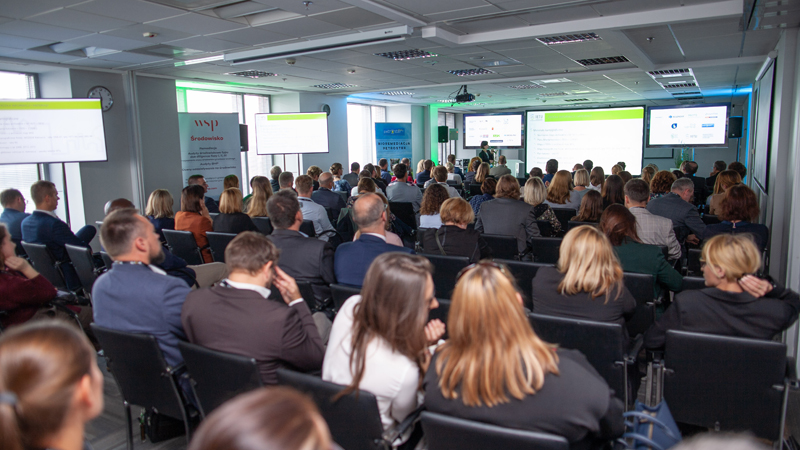
It happens that legal acts are not interconnected, which leads to the creation of loopholes in the law. Such an example was given by Sławomir Adamczyk from the Regional Directorate for Environmental Protection in Katowice (it is worth mentioning that this year's REMEDy was attended by representatives of 15 out of 16 regional directorates. This shows that the administration is strongly open to the issue of remediation). He devoted his speech to the issue of anthropogenic embankments in the layers of the earth in Upper Silesia. This region is specific due to the intensive industrial activity conducted until recently. As a reminder - embankments are land created by human activity, built of natural land, displaced and mixed with waste.
One of the communes in the Śląskie Voivodeship reported pollution and applied for a decision establishing a remediation plan for the area where the waste was used in accordance with the starost's decision, filling the old limestone excavation with coal waste and earth from excavations. Thus, one local government issued a decision based on the provisions on waste management, which collided with the protection of the earth's surface provided for in the Environmental Protection Act. It is not known how many such situations can be noted in Poland. Each of them is a potential threat of soil contamination.
Legislative imprecision may result in many undesirable, sometimes pathological situations.
During his speech, Rafał Hałabura from the Association Instytut Remediacji Terenów Polonszczone pointed to unclear issues of the requirement to test the land before an investment (for example, a development one). It turns out that as long as the contamination has not been identified, many investors do not commission the ground survey. The Rafał Hałabura Association, on the other hand, takes the position that, before commencing the project, the investor is obliged to address the problem of soil contamination for the investment, referring to the construction law and the provision that the investment project should have geotechnical conditions for foundation established, which in accordance with the relevant the regulation should consist, inter alia, of on the assessment of the degree of soil contamination.
So much still depends on the maturity of the investor's awareness that clean ground means healthy people and a better environment. Rafał Hałabura encourages the use of the code of good practice, which indicates registers of contaminated areas, in which a potential investor can check a given land, so as not to hide behind ignorance. In this regard, the data for Poland are worrying. The NIK report from 2019 shows that in almost 1/3 of the inspected starosties there were historically polluted areas, where housing estates or public buildings were built.
Remediation pays off
“We have to break through to the public with this information and build awareness that we can do differently. That every zloty invested by city authorities in remediation will be returned to them many times in the future, ”says Monika Rzeźniczak, technical director at Lion Environmental.
Fortunately, more and more local governments want to properly solve the problem of polluted areas. A good example is the remediation of the former Orzegów coking plant in Ruda Śląska. The local government wanted to revitalize the area and turn it into a public space. The remediation contractor was REMEA. During REMEDa, Piotr Bąbała from REMEA presented to the participants the history of the remediation project, the stages and the final effects of the work. The local community has gained a huge green area with three historic, revitalized coking plant buildings, playgrounds, recreational paths, and a toboggan hill. A healthy area, free from post-industrial pollution, will serve the next generations of the city's inhabitants.
Remediation pays off. Often the economic aspect is the driving force behind repair processes. Craig Franzel, an expert of the consulting company CDM Smith, spoke about it during REMED, using the example of remediation activities in Japan. As an example, he cited a disused automotive plant where the terrain and groundwater were contaminated with chlorinated hydrocarbons. The owner of the land wanted to sell the property, so he commissioned remediation to a specialist company. To purify the groundwater, she chose a bioremediation technique using a carbon additive to the waters, administered through drilled wells. After the remediation process, the contamination-free area was sold at a high profit and a shopping mall was built in its place.
Earth, water and air
Pollution is everywhere. And this is not a scare but a statement of the facts. Many of them, although present for years, have only recently been learned and classified. This is the case, for example, with per- and polyfluoroalkyl substances (PFAS). They are defined by the US Environmental Protection Agency as chemicals that never decompose in the environment due to their extremely long and strong chemical bonds. These compounds do not occur naturally in nature. It is 100% human work. Where were they used? Virtually everywhere. Fire extinguishing foams, Teflon, clothing textiles, packaging, household chemicals, liquids for many industries. Paweł Kot from the i2 Analytical analytical laboratory told about them at REMEDy. Today, the expert noted, PFAS compounds are even in Arctic waters. They accumulate in the human body, in its liver and blood proteins. In plants - in underground parts, but recently also discovered in fruits. Therefore, they pose a serious threat to human life and health. In Poland, however, they are not covered by binding standards ...
There are many threats that legislation has not kept pace with. For example, air intrusion - evaporation of pollutants from the ground, which was discussed at REMEDy by André Chiaradia from Lion Environmental and Laurie Chilcote from Cox Colvin & Associates Inc., general partner of the conference. Volatile organic compounds and their sources in soil, i.e. most often petroleum, aromatic and chlorinated hydrocarbons, can be a source of pollution. Until now, the air has not been specifically tested, regulators in Poland and Europe are starting to look at the threat, the majority of those interested in the topic are international concerns. However, the perception of the risk of chemical vapor intrusion is increasing, so more specific risk guidance can be expected in the near future. All the more so because overseas, proven methods for measuring evaporative pollutants and the degree of vapor permeation, such as Vapor Pin devices, have already been developed.
Society supports and pressures
New methods of fighting pollution are constantly appearing on the market, the older ones are being improved (as long as they pass the test of time), and new ones - adopted with the interest of the industry. Sometimes remediation is needed not only in areas intended for e.g. a housing investment or a new park, but its task is to restore the quality of soil in industrial areas. For example, this is what Martynas Paškevičius from ESSPO deals with, which at the Lithuanian refinery in Mazeikiai uses microorganisms to clean the soil contaminated with oil products. Not only soil - microbes offered by ESSPO are useful for neutralizing railway sleepers contaminated with the above-mentioned compounds. These are treated as waste after the period of operation (unfortunately - often also as fuel ...). Every year, across Europe, it is one million tonnes of railway sleepers withdrawn from use.
All remediation methods have one thing in common - the goal is to be safe, contamination-free soil and groundwater.
The lack of an appropriate approach to pollution in the past today becomes a challenge for experts, regulators and scientists. Social pressure on decision-making and legislative bodies will certainly help in their fight. After all, we all want to live in a clean environment.


VOD ZONE
Vapor Intrusion - Review of the Evolution of VI Assessment and Expected Future Trends
Laurie Chilcote, Cox - Colvin
Evaluation and Remediation of a Large Comingled Dilute VOC Plume in Western Ohio - Case Study
Craig Cox, Cox - Colvin
Key trends in the management of contaminated land across Europe
Oliver Phipps, ERM
The power of microorganisms
Martynas Paškevičius, ESSPO
PFAS – nowo identyfikowane, syntetyczne zanieczyszczenia
Paweł Kot, i2 Analytical
European Network for the Implementation and Enforcement of Environmental Law
Marco Falconi, Italian National Institute for Environmental Protection and Research
Soil Vapour Intrusion in the USA
André Chiaradia, Lion Environmental
Rola Laboratorium Środowiska jako jednego z filarów wsparcia dla bezpiecznego procesu inwestycyjnego
Aneta Chochorek, WESSLING
Wytyczne w zakresie błędów analitycznych i rozbieżności
Piotr Kociołek, PANATTONI EUROPE
Nasypy antropogeniczne w kontekście przepisów dotyczących zanieczyszczenia powierzchni ziemi
Sławomir Adamczyk, Regionalna Dyrekcja Ochrony Środowiska w Katowicach
Remediacja terenu byłej koksowni Orzegów w ramach przedsięwzięcia stworzenia parku
Piotr Bąbała, REMEA
Surfactant Enhanced Extraction (SEE) at LNAPL and DNAPL Impacted Sites Pilot to Full Scale Applications
Ivey Bud, IVEY - SOL
In Situ Remediation of Source Chlorinated VOCs at an Industrial Site in Japan
Guido Ebert, CDM Smith
Craig Franzel, CDM Smith
PARTNERS ZONE
KEYNOTE SPEAKER

Marco Falconi
Italian National Institute for Environmental Protection and Research
degree in environmental sciences and geology. He has held a number of teaching positions with universities and private training companies and has diverse experience as a collaborator on projects of the U.S. Environmental Protection Agency, European Environment Agency, and EuroGeoSurveys.
SPEAKERS

Slawomir Adamczyk
Head of Environmental Damage Prevention, Repair andInformation on the Environment and Environmental Management Department
Position: Head of Environmental Damage Prevention, Repair Department and Information on Environment and Environmental Management (since June 2012). Many years of experience in conducting, supervising proceedings and verification of documents in the field of environmental damage, historical pollution of the earth’s surface, waste management in closed areas, waste storage in a place not intended for this and providing information about the environment.
Previous professional experience: Katowice Geological Enterprise (mainly in geological engineering) Silesian Voivodship Office (environmental protection, groundwater protection)
Education: MA. In Geology (specialization in hydrogeology), University of Silesia in Katowice, Faculty of Earth Sciences in Sosnowiec; postgraduate studies in “Instruments and techniques of environmental management”, AGH University of Science and Technology in Krakow.

Piotr Bąbała
Contract Director, REMEA

Laurie A. Chilcote
Office Manager - Director of Sales Marketing / Director & Vice President
Cox-Colvin & Associates, Inc. / Vapor Pin Enterprises, Inc. & Vapor Pin Do Brasil
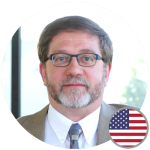
Craig A. Cox, CPG
President/Principal Scientist, Cox-Colvin & Associates, Inc.
In addition to his consulting activities, Mr. Cox provides lectures and poster presentations at numerous regional and international conferences on the topics of groundwater contaminant migration and remediation, source area evaluations, and the assessment of vapor intrusion migration pathways. Mr. Cox is the inventor of the Vapor Pin®, a sub-slab soil gas sampling device used worldwide, and is the primary architect of a variety of environmental database applications, including Data InspectorTM.
Mr. Cox received his B.S. and M.S. degrees in Geology and Mineralogy from The Ohio State University and a Professional Degree in Hydrogeology from the Colorado School of Mines. Mr. Cox is a Certified Professional under Ohio EPA’s Voluntary Action Program and a contributing author on reports concerning background metals concentrations in soils published by Ohio EPA. Mr. Cox is also a member of the ASTM Committee developing standards for the long-term monitoring of vapor mitigation systems.

André Chiaradia
Senior Consultant, Lion Environmental

Aneta Chochorek
Managing Director at WESSLING Polska sp. z o.o
Associated with the company since 2008, where she began her career as a Laboratory Manager. She was responsible for the design, construction, implementation of the quality management system and management of the new WESSLING Polska environmental laboratory in Krakow. Since 2013, he has been working as the Managing Director, overseeing the work of environmental and food laboratories in Poland. Previously, she worked at the Laboratory of the Provincial Inspectorate for Environmental Protection in Krakow.
She has been associated with the environmental protection industry for over 20 years.
She is a graduate of the Faculty of Chemistry of the Jagiellonian University.
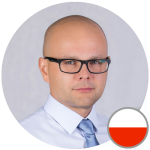
Rafał Hałabura
President Association of the Contaminated Areas Remediation Institute

George (Bud) Ivey
President and senior remediation specialist, Ivey International Inc.

Piotr Kociołek
Environmental director Europe, Panattoni Europe

Paweł Kot
Business Development Manager, i2 Analytical
Since almost two years, his main task is developing the business presence of a leading international laboratory company, i2 Analytical, in Poland. Part of his responsibility is acting in an advisory role to customers, using his experience and the capabilities of i2 Analytical to provide support even in the most complex and demanding environmental engineering projects.
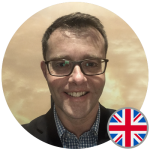
Oliver Phipps
Partner in ERM - Global Director for Key Accounts; Leader of the Contaminated Areas Section for the region of Europe, the Middle East and Africa; Chairman of the Regulatory Working Party - NICOLE

Sebastian Stachowski
Managing director of Lion Environmental

Craig Franzel
Senior Project Manager,CDM Smith

Guido Ebert
Senior Business Development Manager,CDM Smith

Martynas Paškevičius
Partner, ESSPO
PARTNERS
AGENDA
09:00-9:10
Welcome Speech
Sebastian Stachowski
Lion Environmental
International
09:10-9:30
Soil Vapour Intrusion in the USA
» more
» less
André Chiaradia
Lion Environmental
09:30-9:50
In Situ Remediation of Source Chlorinated VOCs at an Industrial Site in Japan
» more
» less
Guido Ebert
CDM Smith
Craig Franzel
CDM Smith
09:50-10:10
Key trends in the management of contaminated land across Europe
» more
» less
Oliver Phipps
ERM
10:10-10:30
International Q&A
Laurie Chilcote
Cox - Colvin
10:30-10:40
Break
Regulatory
10:40-11:00
Anthropogenic embankments in the field of legal contact regulations of the surface of the earth
» more
» less
Slawomir Adamczyk
Regional Directorate for Environmental Protection in Katowice
11:00-11:20
European Network for the Implementation and Enforcement of Environmental Law
» more
» less
Marco Falconi
Italian National Institute for Environmental Protection and Research
11:20-11:40
Catalog of good practices
» more
and water environment cleaning - from determining whether the plot could be exposed to pollution, through research to determine the nature and extent of pollution, design remediation activities, up to the removal of contamination and obtaining documents confirming it.
» less
Rafał Hałabura
Association of the Contaminated Areas Remediation Institute
11:40-12:00
Analytical error guidelines with discrepancies
» more
concentration distribution cause sometimes a mismatch between formal and real land use. In some cases, the rigid application of standards and the preferential choice of radical solutions (extraction of pollution and transporting them elsewhere) lead to costly remediation and not fully justified in terms of real threats to the environment and human health.
» less
Piotr Kociołek
PANATTONI EUROPE
12:00-12:20
Domestic Q&A
Sebastian Stachowski
Lion Environmental
12:20-12:50
Lunch
Technical
12:50-13:10
Surfactant Enhanced Extraction (SEE) at LNAPL and DNAPL Impacted Sites Pilot to Full Scale Applications
» more
» less
Ivey Bud
IVEY - SOL
13:10-13:30
The power of microorganisms
» more
» less
Martynas Paškevičius
ESSPO
13:30-13:50
Vapor Intrusion - Review of the Evolution of VI Assessment and Expected Future Trends
» more
» less
Laurie Chilcote
Cox - Colvin
13:50-14:10
Technial Q&A Session I
André Chiaradia
Lion Environmental
14:10-14:20
Break
14:20-14:40
Evaluation and Remediation of a Large Comingled Dilute VOC Plume in Western Ohio - Case Study
» more
wells, temporary wells, and surface water samples to form a groundwater and surface water quality database. Based on GIS analysis of contaminant ratios of tetrachloroethene, trichloroethene, cis-1,2-dichloroethene, and 1,1,1-trichloroethane coupled with groundwater flow data the commingled plume was found to be sourced from at least six separate areas. To date, four sources have been remediated and groundwater quality has improved dramatically. This presentation will discuss the evolution of the assessment process and the various technologies used to remediate source areas.
» less
Craig Cox
Cox - Colvin
14:40-15:00
The role of the Environmental Laboratory as one of the pillars of support for safe planning and implementation of the investment process
» more
» less
Aneta Chochorek
WESSLING
15:00-15:20
Turnkey solutions i.e. remediation of the former Orzegów plant and turning it into a local park for the community
» more
under Measure 2.5 - improvement of the quality of the urban environment. Priority axis II Environmental protection, including adaptation to climate change of the Infrastructure and Environment Operational Program 2014-2020.
» less
Piotr Bąbała
REMEA
15:20-15:40
PFAS – The synthetic emerging contaminants
» more
» less
Paweł Kot
i2 Analytical
15:40-16:00
Technial Q&A Session II
Piotr Kociolek
PANATTONI EUROPE
16:00-16:10
Ending Speech
Sebastian Stachowski
Lion Environmental


